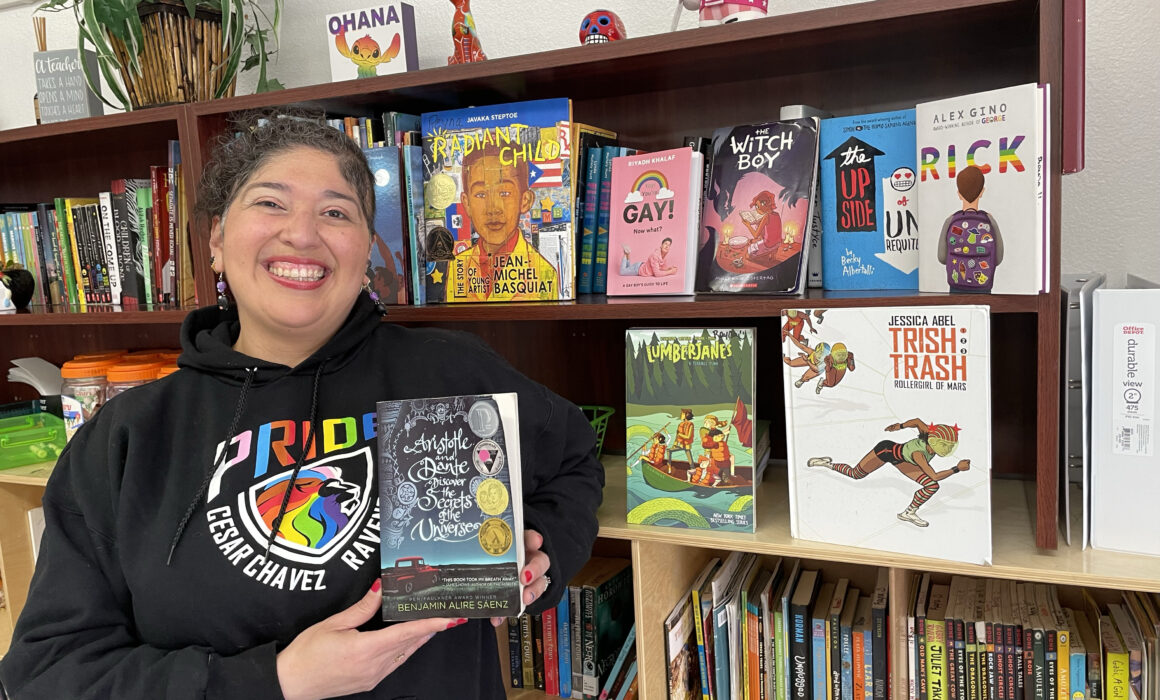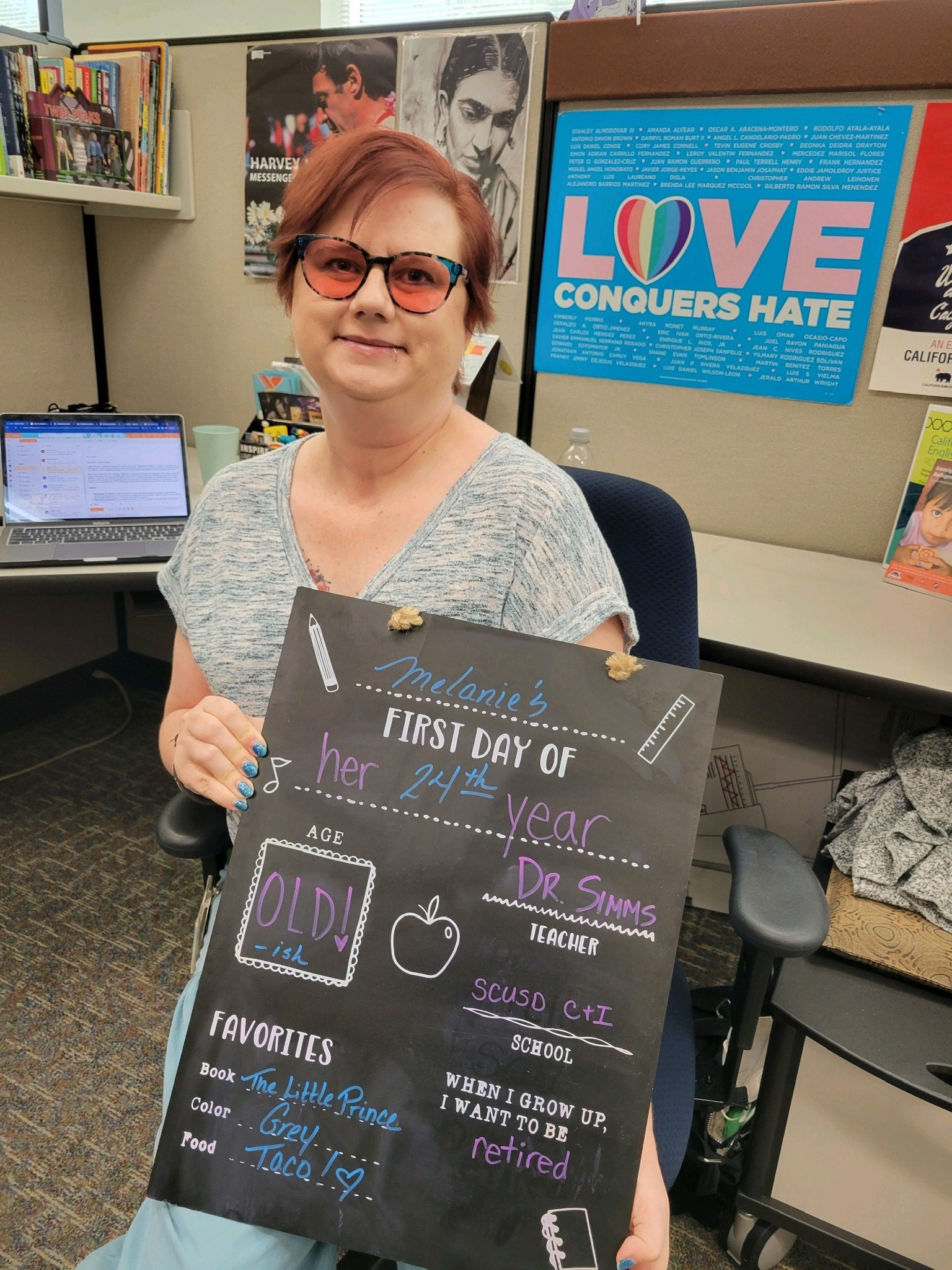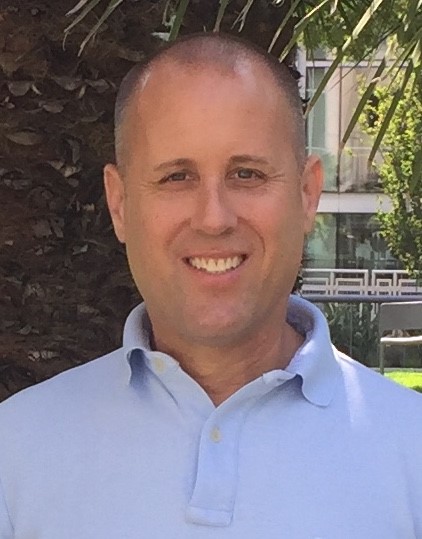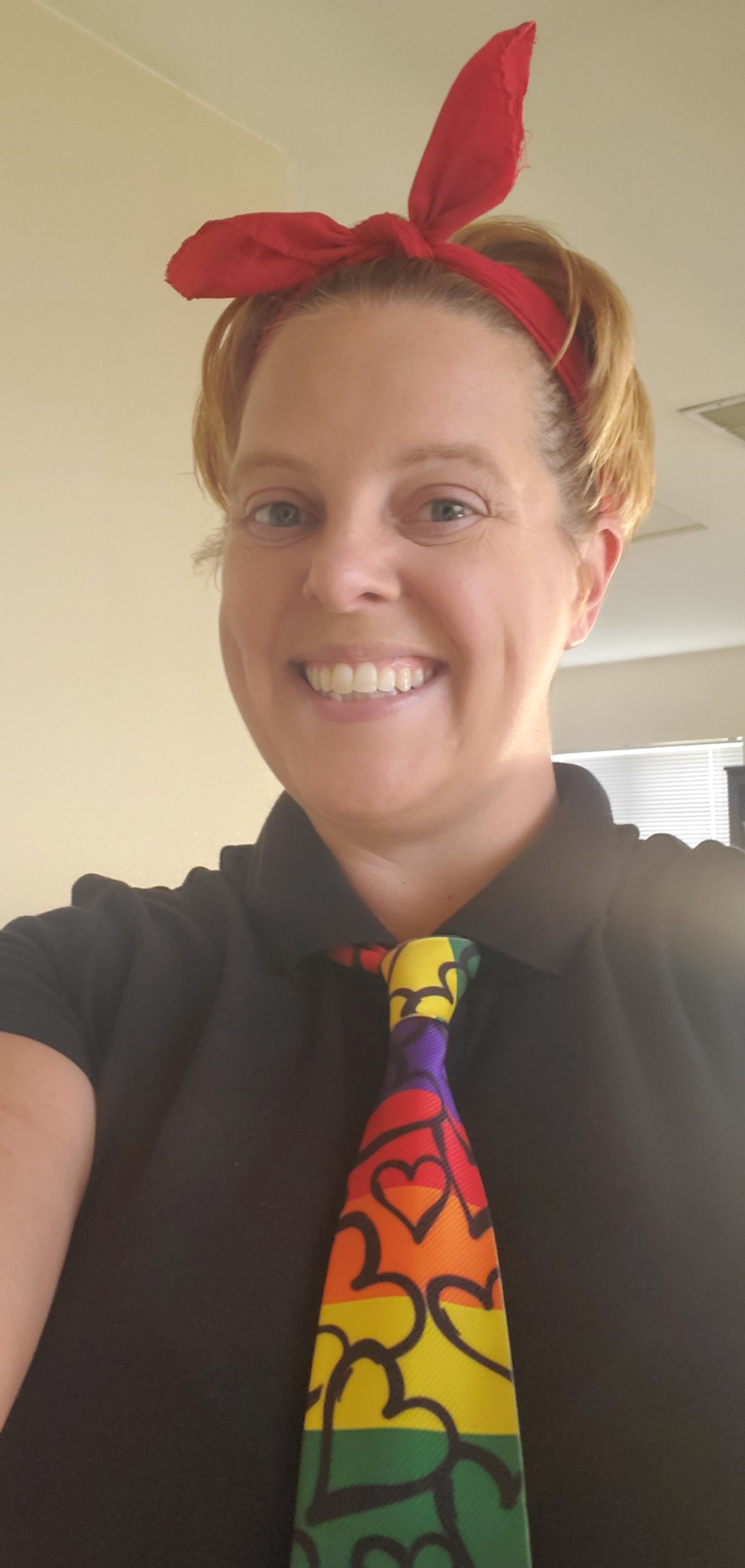
“By building an inclusive, safe environment, you create a space where students can be their authentic selves and be brave to take risks,” says Sacramento City Teachers Association member Melanie Bean. “By creating that space, we’re allowing students to grow.”
While some politicians across the country push laws attacking LGBTQ+ youth and taking away their rights, educators in California are creating equitable and inclusive classrooms and schools where all students feel seen, supported, protected and valued. Bean says these safe spaces and the caring adults who build them are literal lifesavers for students who are being targeted by schoolyard bullies and governors alike, and often some of the only places where LGBTQ+ and especially transgender youth feel like they can be their authentic selves.

Melanie Bean (she, her) supports educators who are working to build inclusivity in their schools throughout the Sacramento area.
“It’s small things that recognize people’s existence that make the difference,” says Bean, an out educator who wears a NEA-created “I’m Here” badge signifying her support for LGBTQ+ students. “Students come up to me and thank me for wearing it.”
In East Palo Alto, eighth grade teacher Andrea Reyna is big on visibility as part of a multi-level path to build safe and brave spaces at school — she distributes Pride flags, Safe Person badges and CTA-produced posters to fellow educators at César Chávez Ravenswood Middle School to help show all students they belong. She says being visible lets students know an educator is a trusted ally.
“One way I do that is by being out and proud — I think it’s so important to have educators who are,” says Reyna, who is openly pansexual and married to a trans woman. “In these especially difficult times when LGBTQ+ students are under attack, it’s imperative that people be outspoken in their support.”
First-grade teacher and Orinda Teachers Association President Charles Shannon shares stories and pictures of his partner and family with his class, working to demonstrate different types of relationships and family structures for his students. Shannon shows his students the value in learning about each other, the things they have in common and the differences that make everyone unique. Using lessons from Welcoming Schools and GLSEN, he works to make sure his students know they are all important, cared for and supported.

Charles Shannon
“You can’t shy away from what’s good for kids,” says Shannon. “Our kids are always watching and listening. The influence you have is so powerful. Think about every word you say, everything you do — all of it impacts students.”
Defending LGBTQ+ Youth
Even in California, the vast majority of LGBTQ+ students report that school is a hostile environment. According to GLSEN’s 2021 National School Climate Report, 96% of California students reported hearing anti-LGBTQ+ remarks at school, with nearly half hearing school staff make homophobic remarks and two-thirds hearing negative remarks about someone’s gender expression. The report also found that most LGBTQ+ students reported being harassed or victimized at school, and half said their school had discriminatory practices toward students who are LGBTQ+. While Equality California’s 2022 Safe and Supportive Schools Report Card (safesupportiveschools.org) showed more than two-thirds of school districts have policies that explicitly prohibit bullying on the basis of sexual orientation or gender identity, 68% of LGBTQ+ students nationally felt unsafe at school because of their sexual orientation, gender identity or gender expression, according to GLSEN.
According to the Trevor Project’s 2022 National Survey on LGBTQ Youth Mental Health, 45% of LGBTQ youth seriously considered committing suicide in the past year, with less than a third of transgender and nonbinary youth finding their own home to be gender-affirming. The survey showed that LGBTQ youth who found their school to be LGBTQ-affirming reported lower rates of attempting suicide, underscoring the importance of supportive educators.
West Sacramento art teacher Naqiba Gregory has a former student who is transgender and has been hospitalized for suicide watch three times since being outed at his new school. Gregory said the student shared that he felt unsupported by his educators, many of whom refused to use his preferred name,and said he did not see LGBTQ+ people represented in his class lessons and curriculum.
“The challenges he faces daily are not something any child should be dealing with,” says Gregory, a member of West Sacramento Teachers Association and CTA Human Rights Cadre trainer. “Students aren’t asking us to agree with their decisions or give them special treatment, they simply want to be accepted. They desire that one aspect of themselves won’t make them less deserving of support or advocacy when it comes to bullying or teasing.”
The targeting of LGBTQ+ youth by conservative lawmakers across the country over the past five years is amplifying the rising tide of hate — the Trevor Project report found that four in five nonbinary or transgender youth said they are concerned about being prohibited from playing sports due to state or local laws, while 93% said they are worried about transgender people being denied access to gender-affirming medical care.
“LGBTQ+ students have some of the highest rates of depression, suicide attempts and self-harm,” says Reyna, a member of Ravenswood Teachers Association and CTA Human Rights Cadre trainer. “The open culture wars have almost made it OK to express one’s homophobia or transphobia, and it’s very difficult for LGBTQ+ students. It’s becoming borderline genocide with the denial of gender-affirming care.”
Inclusion Matters
Sixth grade teacher Erica Nuss runs the Equality Club at her school in Palmdale’s Westside Union School District; the club is a safe place for students to discuss issues in their lives. She has developed a deliberately inclusive curriculum, such as having her students research and present on prominent and historical figures who were LGBTQ+ or disabled.
“For all my time in the education system, we have highlighted people who are mostly white and mostly straight. We know we don’t mirror that most of the time,” says Nuss, a member of Westside Union Teachers Association. “I want to make sure my students see themselves in the curriculum.”
As an out lesbian educator, Nuss says it’s important for her to have a more inclusive and equitable classroom than what she experienced as a sixth grader. Nuss has the Progress Pride flag displayed in her class and often discusses tolerance topics with her students — recently the class learned about soccer star Megan Rapinoe and discussed the role LGBTQ+ athletes can have on society.
“I am one of the only LGBTQ educators in the district, so a lot of times I am the first LGBTQ person my students meet,” says Nuss (she, her), a CTA Human Rights Cadre trainer. “I had a student ask me if lesbian is a bad word, and we had a very good conversation about it.”
Being an out educator and creating safe spaces can draw unwanted attention, even in California. Earlier this year, Nuss was verbally attacked for her LGBTQ+ advocacy by members of the public at school board meetings. Unfortunately, her district management played both sides, equating hateful opinions with the need to protect and affirm the rights of LGBTQ+ people.
“There’s a whole lot of ‘we support you, but …’ The sentiment of homophobia and transphobia is shared bysome people in our community. It’s 2023 and I never thought I’d hear some of the things that are being said about me,” says Nuss. “I am extremely passionate about this work, and while it is hard most days, it is worth it. I believe my class of 32 kids is becoming more tolerant, so we have to keep pushing.”
In Ravenswood, Reyna says management is supportive for the most part, balanced with the need to acknowledge students who have different beliefs. She says some students are not open to learning from or having an LGBTQ+ educator, adding that a parent filed a complaint with the district against her this year for having a classroom that is “too gay.” Shannon says these experiences illustrate the need to create brave spaces, for students and educators alike.
“My greatest gift to the profession is that I am not afraid. They want our voices to be silenced,” says Shannon (he, him), also a CTA Human Rights Cadre trainer. “In any state that’s trying to pass anti-LGBTQ+ laws, we have to show solidarity and stand with each other. We didn’t get this far as LGBTQ+ people by being afraid and not taking risks.”
Supporting Each Other and Our Students
A wealth of resources exist through CTA and NEA (available on both websites) to build inclusive classrooms and support our most vulnerable students, including important legal rights at the state and federal levels that outline responsibilities and protections for educators and students.
“If you don’t know what your rights and your students’ rights are, you can’t begin to create a safe space for anybody,” Nuss says.

Erica Nuss, Westside Union Teachers Association
She adds that statistically speaking, there are three students who will identify as LGBTQ+ in every California classroom — those students have a 40% reduced suicide risk with even one supportive adult in their lives, which is why educator allies are so important.
“Our students are still figuring out who they are, and we can be the neutral, accepting party on their journey,” says Gregory (she, her). “As educators, we have the unique privilege to be able to help society adapt to a changing world where we are more inclusive and celebrate people as they are.”
Support and training are also available through the CTA Human Rights Cadre, comprised of educators who are passionate about broadening and developing the racial and social justice perspectives of other CTA members. Shannon says getting involved with the Human Rights Cadre helped him find his voice and connect with like-minded members to share information, support educators statewide and help students. He recommended educators look to their local associations and CTA for assistance when working to create inclusive schools that value all students.
“Don’t give up. Be who you are. Be the voice in your district,” Shannon says. “I tell anyone who is dealing with race or LGBTQ+ issues, get involved with CTA — it will help you grow.”
The FAIR Education Act
Signed into California law in 2011, the FAIR Education Act amended California Education Code to include the Fair, Accurate, Inclusive and Respectful reference to contributions by people with disabilities and members of the LGBTQ+ community in history and social studies curriculum.
The FAIR Act ensures that historical contributions of people who identify as LGBTQ+ are accurately and fairly portrayed in instructional materials by adding them to the list of under-represented cultural and ethnic groups included in the state’s inclusionary education requirements.
FAIR Act protections include the prohibition of instruction or activities that promote discrimination on the basis of gender identity or sexual orientation. Textbooks and instructional materials that reflect adversely on people who are LGBTQ+ are expressly prohibited, while all materials must accurately portray the cultural and racial diversity of society, and include contributions in all types of roles to the development of California and the United States.
California Education Code 233.5 — Teachers’ Duties
“(a) Each teacher shall endeavor to impress upon the minds of the pupils the principles of morality, truth, justice, patriotism, and a true comprehension of the rights, duties, and dignity of American citizenship, and the meaning of equality and human dignity, including the promotion of harmonious relations, kindness toward domestic pets and the humane treatment of living creatures, to teach them to avoid idleness, profanity, and falsehood, and to instruct them in manners and morals and the principles of a free government.
(b) Each teacher is also encouraged to create and foster an environment that encourages pupils to realize their full potential and that is free from discriminatory attitudes, practices, events, or activities, in order to prevent acts of hate violence …”
The Discussion 0 comments Post a Comment